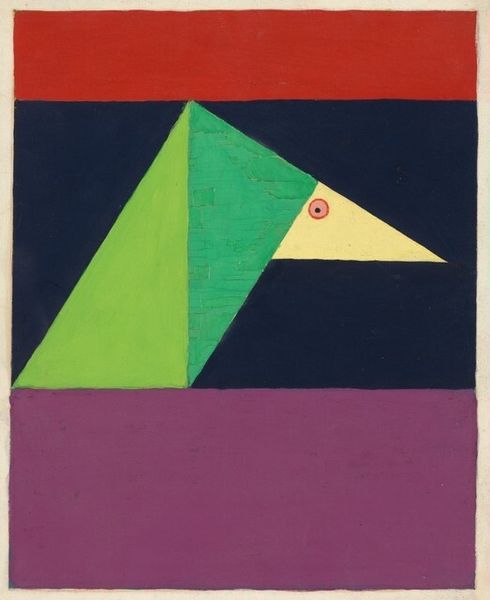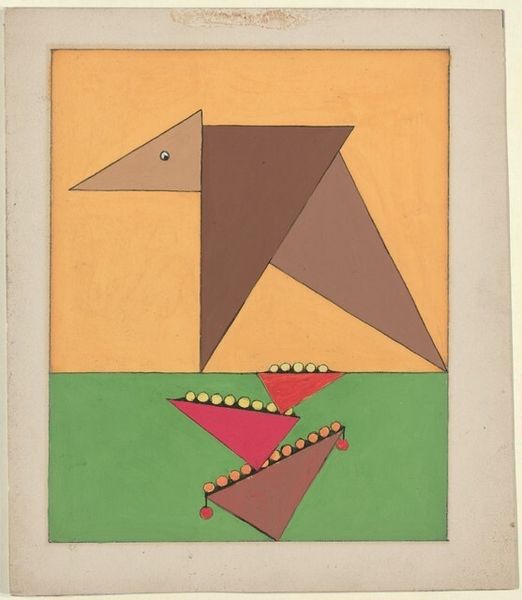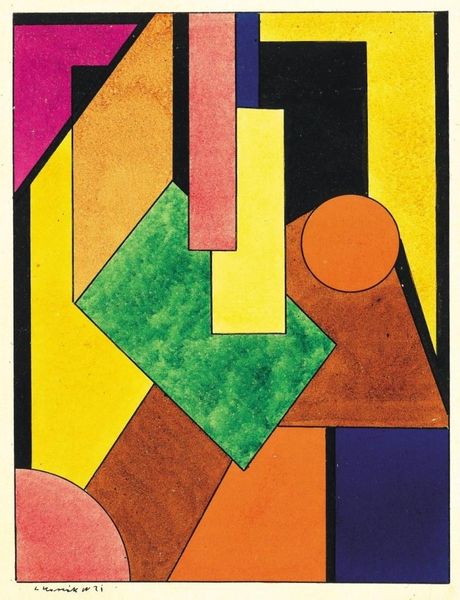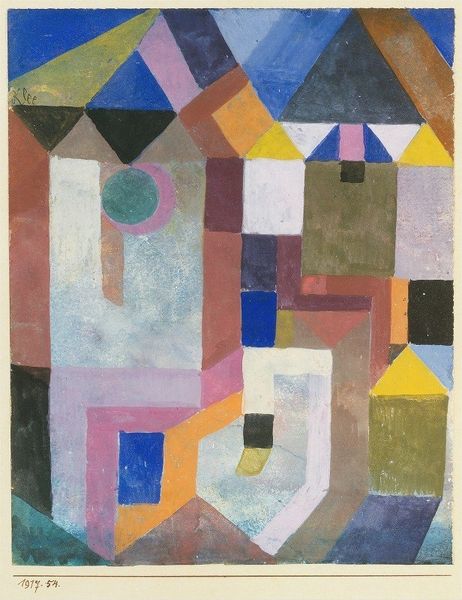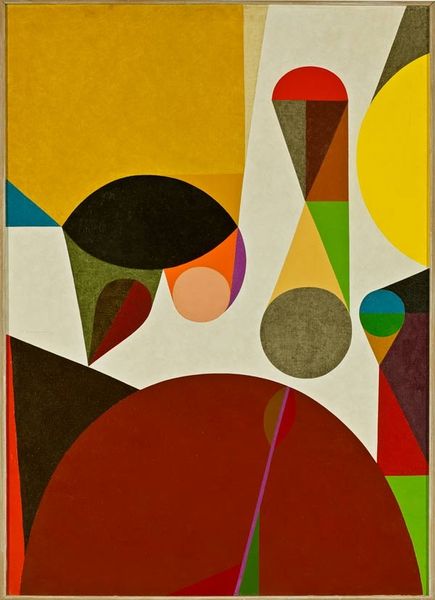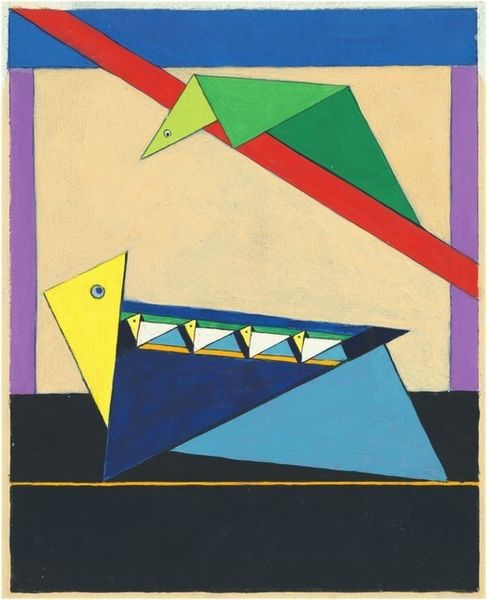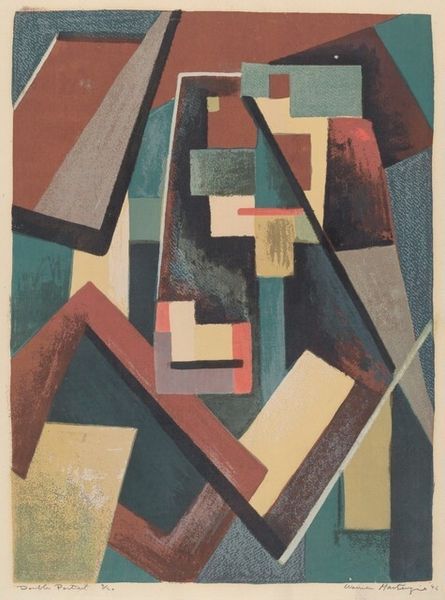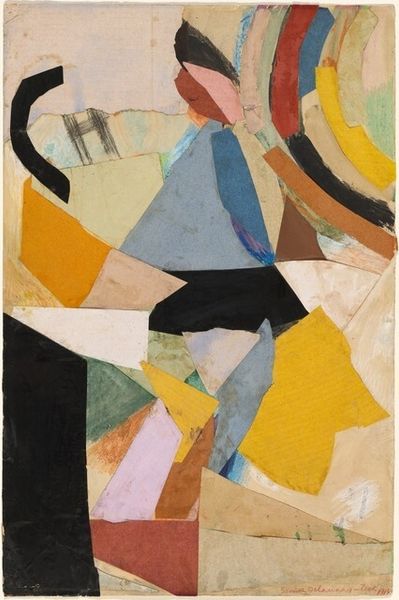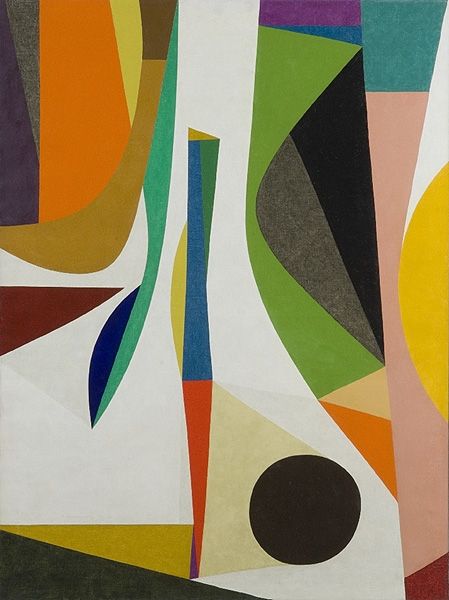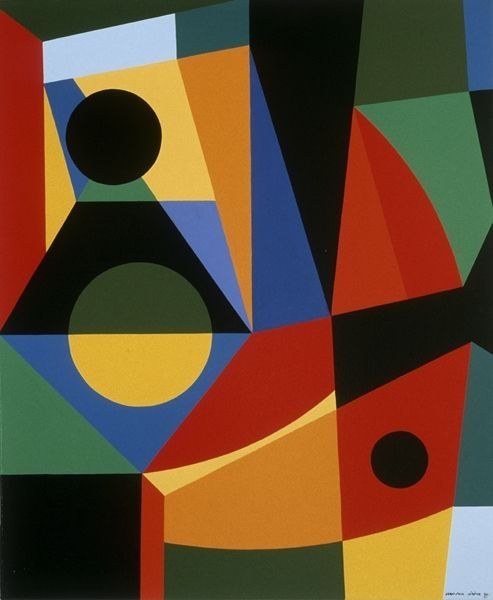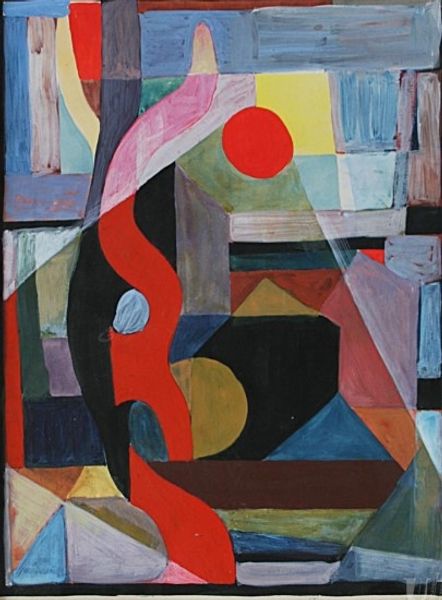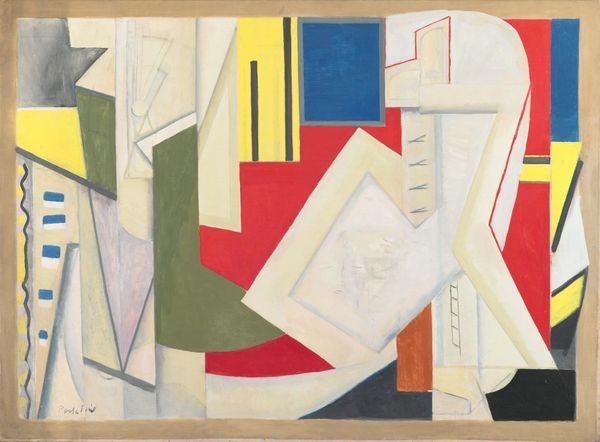
drawing, painting
#
drawing
#
cubism
#
painting
#
pop art
#
form
#
geometric
Dimensions: image: 20.32 x 15.56 cm (8 x 6 1/8 in.) sheet: 25.4 x 19.05 cm (10 x 7 1/2 in.)
Copyright: National Gallery of Art: CC0 1.0
Curator: Here we have Edward Steichen’s, “The Duck”, made around 1922. What are your initial impressions? Editor: Intriguing. I’m immediately struck by the sharp geometry—the forceful arrangement of triangles and rectangles. There’s a visual puzzle at play here with the colors. Curator: It's easy to see the influences of Cubism, isn’t it? Especially in how Steichen breaks down and reassembles the familiar form of a duck into these abstract elements. But what statement does such deconstruction propose about society? Given the date, the aftermath of World War I hangs heavy in Europe and beyond. What cultural anxieties are being reflected here, in the distortion and abstraction of the organic? Editor: A pertinent question. But let’s consider how color and shape interact, apart from social trauma, here. The careful balance of warm tones against cooler hues, for example, is important for me. And the use of simplified forms guides the eye. I would describe it as deceptively complex in the overall construction. Curator: Indeed. And while one might be tempted to solely credit European avant-gardism, it’s important to recognize Steichen’s particular, American perspective. Steichen had a distinguished career as a fashion photographer too. And during WWI, he had been directing aerial photography. Those wartime experiences absolutely altered his aesthetic approach to art. This duck, this almost playful arrangement, carries the weight of both destruction and innovation. He reflects a search for clarity amidst global shifts. Editor: That's a wonderful intersection to tease out. In other words, even with such flat shapes, "The Duck" is an emotional response to modernism and Steichen’s changing world view. What is left is for each viewer to contemplate this new kind of seeing. Curator: Precisely. “The Duck” offers a space to consider art’s enduring capacity to both question and reflect. Editor: I couldn’t agree more. What we’re left with is a synthesis that transcends a single perspective.
Comments
No comments
Be the first to comment and join the conversation on the ultimate creative platform.

